|
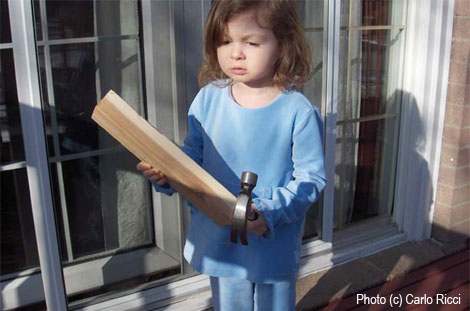
Always Learning -
Respecting Children's Ability to Learn from Life
By Carlo Ricci
How old do children have to be before they can begin unschooling? The answer to this question is simple: Now. As soon as you are fortunate enough to discover this alternative way of life, it is the right time.
Part of what may motivate someone to ask this question is the word “schooling” contained within the word “unschooling.” This is why I prefer the term that was coined as the name of this magazine: “life learning.” If we replace the term “unschooling” with “life learning” the question is no longer logical. The question “How old do children have to be before they can begin life learning?” automatically elicits the response of “they always have been” or at least “now.”
I believe life learning is a way of life, a philosophy of existence. In its simplest terms, it is a learner-centered, democratic approach to life. To clarify, I am using the terms “learner-centered” and “democratic” in a way that Jerry Mintz of the Alternative Education Resource Organization (AERO) did in an interview on Radio Free School in 2004. Jerry defined learner-centered education as “an approach that is based on the interest of the student rather than curriculum driven, where someone else has the idea of what you ought to be learning,” and he defined democratic education as “education where students are actually empowered to make decisions about their own education and, if they are in a school, about their own school.”
“Life learning” is a wholistic term that respects an individual’s body, mind, and spirit. To this end, life learning is not a recipe that one has to follow, but it is a process that differs from situation to situation. In what follows I am going to share what life learning means to me in connection to what I have learned from my daughters.
First, I need to say that I feel that I have made mistakes as a parent, but I believe that this is okay. Part of life learning is that we are always unfinished and therefore grow and learn throughout life. I believe there is a danger in believing that we are not continuing to learn and grow. Admitting and recognizing our mistakes and sharing them with others is an important part of life learning.
My wife and I share a lot of life learning assumptions and struggle with trying to better understand those that we do not share. Again, this is a part of life learning. One big area is whether to school our daughters. I am totally against schooling and my wife is reservedly for it; fortunately, ultimately we both agree that the decision needs to be our daughters.’ Again, this is life learning.
I believe that children are capable of making sophisticated decisions and need the respect and belief that their decisions matter. They need to feel empowered and respected for the human beings that they are. Are they going to make mistakes? Of course; as I said, making mistakes is an important part of life learning. We adults can share our thoughts, but children need to be listened to also.
On a number of occasions, my daughter has taught me that I was wrong and she was right. She has helped me understand that she knows her potential better than I do, that she knows her capabilities better than I do and, perhaps most importantly, that she is more capable than I of gauging what she can do and what she cannot do.
Doing it on Her Own
Allow me to share several examples. When my daughter was younger and we would go to our local park, I would bring her to the smaller slide. She quickly mastered climbing and sliding down on her own. One day she told me that she wanted to tackle the larger slide on her own. I immediately shouted, “No! It is too high up and you will fall and hurt yourself.” Fortunately, I shouted this to myself and not out loud to her. What I said to her was, “Do you think you can do it on your own?” She responded, “Yes.” I nervously watched her skillfully climb down the slide without incident. After she did this a few times I realized that there was nothing for me to worry about and my reaction was unnecessary.
Recently, the park has been redesigned and a similar thing happened. This time she asked to go up a difficult ladder that has a rope to assist the children climb. It is clearly intended for older children. You would think that after all this time I would react in a more trusting way, but again I inwardly reacted in a fearful way while outwardly asking her the same supportive question: “Do you think you can do it?” Again she said she could. Off she went. After about several steps she realized that it was harder than she had thought, so she simply called me to come and help her. I did, and after a few weeks she was capable of doing it on her own.
From this, I learned that children are capable of determining what they are capable of doing and if they find that they cannot they will ask for help. Secondly, I feel that it is my duty to help when she asks for it and not before. When I forget, my daughter is very firm about reminding me that she can do it on her own. On a number of occasions she has verbally and rather violently insisted that I stop doing what I am doing and immediately leave the task to her. For example, I recall when she was younger and wanted to fill her sippy cup with water. I lovingly took it from her and proceeded to unscrew the lid so that I could fill it for her. She quickly had an outburst that I at first thought was an overreaction on her part. However, the more I thought about it, the more I concluded that her reaction was appropriate. She needs to do it for herself. She needs to learn how to do it. And my interference limits her learning and growth.
My daughter has reacted the same way when, upon seeing her struggle with getting dressed, I have tried to help her put her clothes or boots on. Again, by doing this I am thinking that I am being helpful, but what I am really doing is interfering in her learning and growth. I am convinced that she would not be as skilled and confident at doing what she does if I had not understood the importance of not helping unless she asks for help. And even when she does ask for help, I have learned that I need to help as minimally as possible and do only what she asks and no more. Again, the more I do the less she does.
Life learning also means ignoring the practice of fragmenting subjects made popular by schooling, and instead having children learn life as they live life. My favorite insight into what is learning comes from one of my favorite educational thinkers: John Holt. In his book Learning all the Time (Da Capo Press, 1989) he wrote, “Living is learning. It is impossible to be alive and conscious (and some would say unconscious) without constantly learning things. If we are alive we are constantly receiving various sorts of messages from our environment all the time.”
Here are some more examples from my daughter’s life of what this means for my understanding of life learning.
The Rotting Board
The first example took place last summer. One board on our deck was rotted out. I decided it was time to change it and my daughter decided she wanted to help. So we both went out, used a crow bar to remove the old piece of board, got a measuring tape to see what size the replacement board had to be, went to the lumber store to buy the replacement, and discovered that we did not know what type of wood we needed. We went home, researched it, discovered it was cedar, and went back to purchase the replacement, had them cut it to size, came home, and nailed it in place.
My daughter has a real hammer that is a smaller version of my hammer and she banged away as best she could. Remember, she was just over two years old at the time. I will not disrespect the situation by fragmenting the learning that happened in terms of a schooling curriculum because I truly believe that does not matter. What matters is that we were life living and therefore life learning. If what we learned fits into what schools arbitrarily value, that is immaterial.
I do, however, want to add that I believe the learning that resulted from this life experience was so deep because she embodied it and because it was genuine. She learned about measuring tapes, hammers, nails, the importance of numbers, the value and need for money, and so on.
After the board was in place, it was time to prepare and paint the deck. She was very helpful when it came time to clean the deck. As I scrubbed, she hosed it down. Nothing, and I mean nothing, would have kept her away from helping with the painting. So, she dressed in her smock and away we went.
Some have commented on allowing our daughter to use real nails, a real hammer and allowing her to paint the deck. The truth is that she was never in danger and you cannot tell the part that I painted and the part that she painted. Incidentally, this may say as much about my painting skills as it does hers.
Admittedly, the whole process took a lot longer than it would have if I had done it by myself; however, it would not have been as enjoyable and rewarding. As well, my daughter’s presence forced me to be more mindful. I was much more careful and aware of the present dangers. For example, as we removed the old board I did not simply throw it aside; we made sure that we removed all of the nails so that there was no chance of us getting hurt. I also covered the hole where I removed the board so that we would not accidentally fall in.
In saying that it would have been faster, I am not implying that my daughter was not a genuine help, because she was. On one occasion, I asked if she wouldn’t mind going inside and getting the broom and dust pan. She came back with my broom and dustpan as well as hers. She helped me sweep and keep our work area clean.
On another occasion she warned me that there was a nail that we should discard. On yet another, she turned off the hose while I was busy doing other things. In short, the next time I have to change a board, I hope she will agree to help.
The next example happened a few months ago when my wife went out the door and to her surprise ended up with a cracked storm door handle in her hand. Again, my daughter helped us throughout the whole process. She skillfully worked the screwdriver until she got the screws out and so on until the handle was replaced.
Similarly, when our faucet needed to be replaced she was a ready and willing helper. I will not go into the details because I believe that the point has been made. Whether it is cooking, cleaning, repairing, gardening, bathing, and on and on, my daughters are ready and willing to help in any way that they can.
Taking the Time To Hug the Trees
Another important part of life learning is mindfulness or being in the moment. I am often reminded of this by both of my daughters. When we go out for our walks, speed is not how I would characterize the walks, nor would I have it any other way. My daughters remind me that the faster you go the more you miss. When we go for our walks we need to greet the trees, watch the ants and explore whatever catches our attention. I had forgotten how great it feels to hug a tree. Having young children around is great because on the few occasions when my neighbors witness my tree hugging they do not question it because they connect my behavior with appeasing the children. I often wonder why I would not hug a tree without my children around. What other wonderful things do we miss out on, just because we are now adults?
This is not a complete description of what life learning means to me, nor is it intended to be. Part of what I wanted to do was to share my commitment and resolve about the value in life learning for all age groups. Like many who have shared their experiences and successes with life learning, I want to stand side by side with these pioneering heroes who live life learning.
Whether it is in making mistakes, doing daily activities, or simply being mindful, the power and value in life learning needs to be respected.
Carlo teaches in the faculty of education’s graduate program at Nipissing University. He incorporates the spirit of unschooling, democratic and learner centered principles in all of his classes. Everything of value that he has learned, he has learned outside of formal schooling; he has never taken a course in school connected to what he now teaches and writes about. He has experience in teaching almost every grade in elementary and high school and has also taught in undergraduate, teacher education, and graduate programs. His personal schooling experience as a student and later as a teacher has inspired him to revolt against institutional schooling. He continues to heal from the wounds inflicted on him by formal schooling.
Copyright © Life Media
Privacy Policy
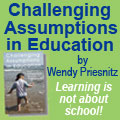 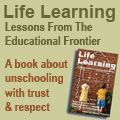 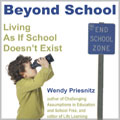
  
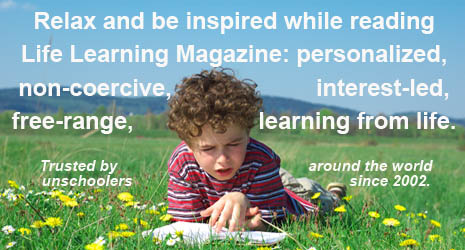
|

